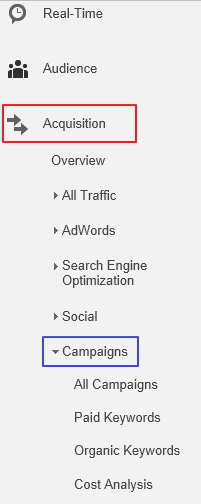If you decide to use paid online advertising, campaign tracking is a good way of finding out how effective your adverts have been.
- Creating a tracking URL
- How to track your URL
- Other resources you may find useful
-
Creating a tracking URL
By editing the page URL (Uniform Resource Locator) to include some tracking parameters you’ll be able to see how many people have visited the page via the advert and how many have found the page organically or via other routes.
You’ll need to set up a Google Analytics account. If you aren’t yet using Google Analytics read our guide to getting started on Google Analytics.
You’ll need to edit the page URL which the advert is linking to. The easiest way to do this is to use Google URL builder.
Fill in these details:
- Source: where is the advert being displayed?
- Medium: what format is the advert? Is it a banner, a link, an email or something else?
- Campaign: which campaign is the URL for?
- Term: this parameter is for paid keywords. For most campaigns this can be ignored.
- Content: if you have slightly different content for the same format advert you can distinguish between them here. This is useful if, for example, you’re testing the effectiveness of different wording across two banners.
So, for example, if Age UK Anytown was running a banner advert on the Anytown Gazette’s website to promote their Fun Run then the parameters would be:
- Source: anytowngazette
- Medium: banner
- Campaign: funrun
- Content: bannerad1
If they were running a banner advert on the Othertown Mail’s website to promote their Fun Run but with slightly different wording then the parameters would be:
- Source: othertownmail
- Medium: banner
- Campaign: funrun
- Content: bannerad2
Note: the parameters are case sensitive, so it’s best to use only lower case letters to avoid confusion.
Using the first example above your URL would look like this:
You then use the URL as you would normally, eg as the link on the relevant campaign advert.
You don’t need to use all of these parameters, especially if you only have one advert running. These parameters are there so that, in combination, they give the user enough flexibility to track hundreds of different adverts within the same campaign.
If you want to use the campaign tracked URL on social media, such as Twitter, you may wish to shorten it first using Bitly (a free app to create short URLs). This will not affect the tracking of the link in Google Analytics.
2. How to track your URL
Once your URL is installed you can view traffic through it by logging into Google Analytics and going to the campaigns report. You can find this under ‘Acquisition’ in the left hand panel.


